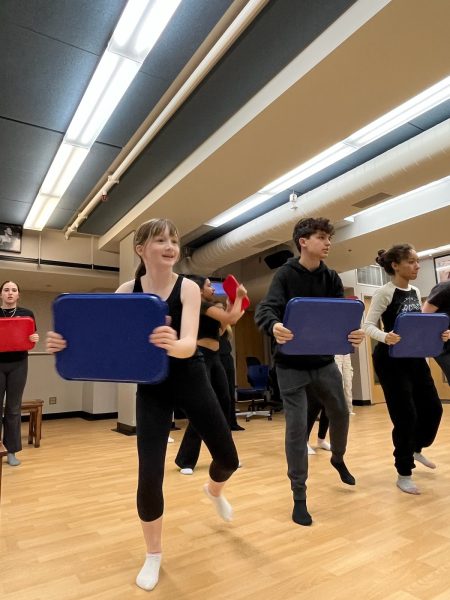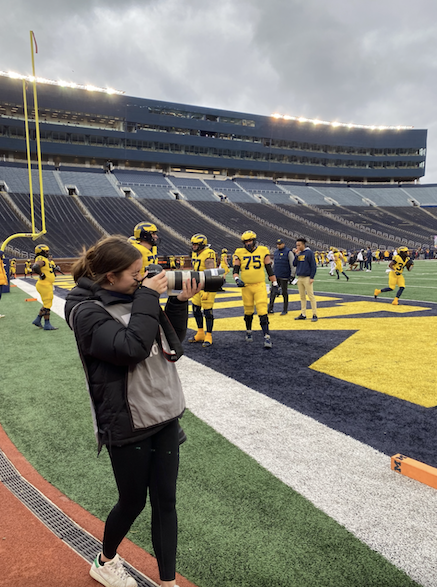A Closer Look
What is the history behind our common spaces?
Every day, Parker students take a seat on a piece of Parker’s history. While we may not recognize it, many of our common areas have been here for years, and many students use these spaces to socialize, do homework, or for other activities. But how much do we really know about these grade-divided areas? Who made the decision that only juniors and seniors sit on the 4th floor chairs or that freshmen sit at the cat boxes? Why did Parker, a school that prides itself on equality, choose to allow these areas to be divided by grade?
Upper School English Teacher Cory Zeller feels that there are positives to having these spaces divided by grade. “I think on the one hand, especially for underclassmen, there is a benefit to them having a space that we can talk to them about in orientation and bridge and say, ‘this is a place where you can go and hang out,’ that they’re not just wandering about, trying to find a space to sit down,” Zeller said.
However, Zeller also thinks that establishing spaces for freshmen is not the same as allowing different grades to simply divide themselves however they please. “But they’re also our least powerful group in the high school,” Zeller said. “There’s a difference between telling the freshmen: Here’s a spot that freshmen typically hang out, so you can ‘safely go there and hang out’ and not so ‘you won’t be on somebody else’s turf.’”
There are three main areas of Parker where different grades sit. The freshmen usually sit on the cat boxes, the sophomores sit on the sophomore bench, and the juniors and seniors sit on the 4th floor chairs. While these are not the only areas where kids sit and eat lunch, these are the main spaces that come to mind when talking about grade-specific areas.
Sophomore William Ehrlich feels that the current setup of seating spaces divided by grade should be changed. “I think that students should be able to sit wherever they want,” Ehrlich said. “Instead of having grade-specific seating zones, it should be free.”
Similarly, junior Isabella Gomez-Barrientos feels that the setup of spaces should be changed. “Having different spaces for each grade is nice, but I don’t appreciate how determined the whole student body is to uphold their ‘territory,’” Gomez-Barrientos said. “Students at Parker should be more flexible about where they sit and study.”
Zeller feels that the sophomore bench has a lot of flaws. “The bench for me has always been a little bit problematic because in its nature of being a bench, you sit on it and face out. It becomes intimidating for freshmen to walk by because they’re having to walk by a group of people who are older than them who are all staring out,” Zeller said.
Zeller went on. “And whether or not there’s malicious intent or any kind of commenting or anything, the perception is they feel on the spot, and it’s intimidating to walk by there,” Zeller said.
Zeller feels that there are some similarities between the issues with the sophomore bench and the fourth floor chairs. “Similarly, we have a row of chairs that are along one side of the wall,” Zeller said. “And sometimes, in cases both on the sophomore bench and in the chairs on the fourth, people will sit against the opposite wall and sort of create, what I’ve termed in the past, a gauntlet, which makes it hard to walk by because legs are sticking out.”
Zeller feels that there is no clear answer to the question about whether grade-divided spaces are good or bad. “So that’s why my answer is complicated,” Zeller said. “Cause in some cases I think it’s good to have spaces that are established, but in other cases, just the construction of the space leads to intimidation, whether intentional or not.”
Zeller feels that there are patterns of who sits at these spaces. “What we tend to see over time is that students with a lot of social clout feel very comfortable in those spaces, but not the whole class,” Zeller said. “It leads me to wonder if that is just established over time, like you sort of have an internal sense of your social status, and so your level of comfort is based on that or who else is sitting on the bench or who else is sitting on the chairs determines your comfort level.”
Gomez-Barrientos feels that there is a specific reason for these divides of grades. “Seniority is probably one of the biggest factors,” Gomez-Barrientos said. “The underclassmen are usually too intimidated by the upperclassmen to sit near them.”
Ehrlich thinks that Parker should attempt to be more inclusive amongst students’ seating areas. “There are a lot of good spaces for people to sit that are taken by a certain grade demographic,” Ehrlich said. “I feel like students will still sit with people of the same grade, but will be more open about where they get to sit.”
However, Gomez-Barrientos thinks that this is a good idea but not a feasible one. “Of course Parker should strive to make spaces more inclusive,” Gomez-Barrientos said, “but there shouldn’t be new rules imposed. I don’t think that anything will be followed. Sometimes Parker makes rules without getting the full opinions of the students which is the main reason rules aren’t followed at Parker.”
Zeller feels that this needs to be looked at. “I do think it’s worth examining why those spaces, which are deemed spaces for the whole class, are only comfortable for some people.”











